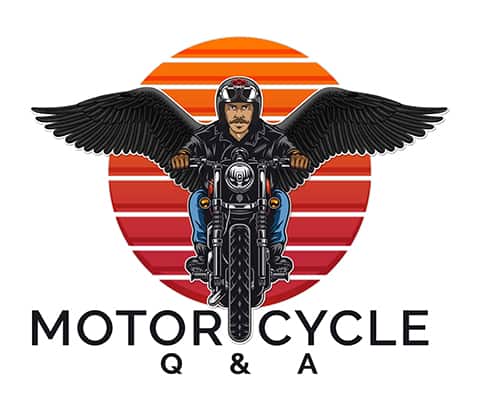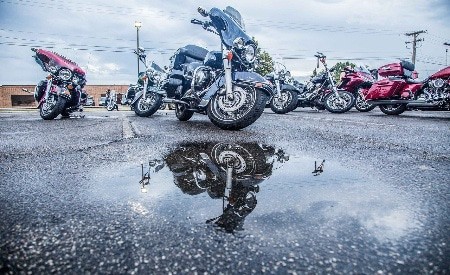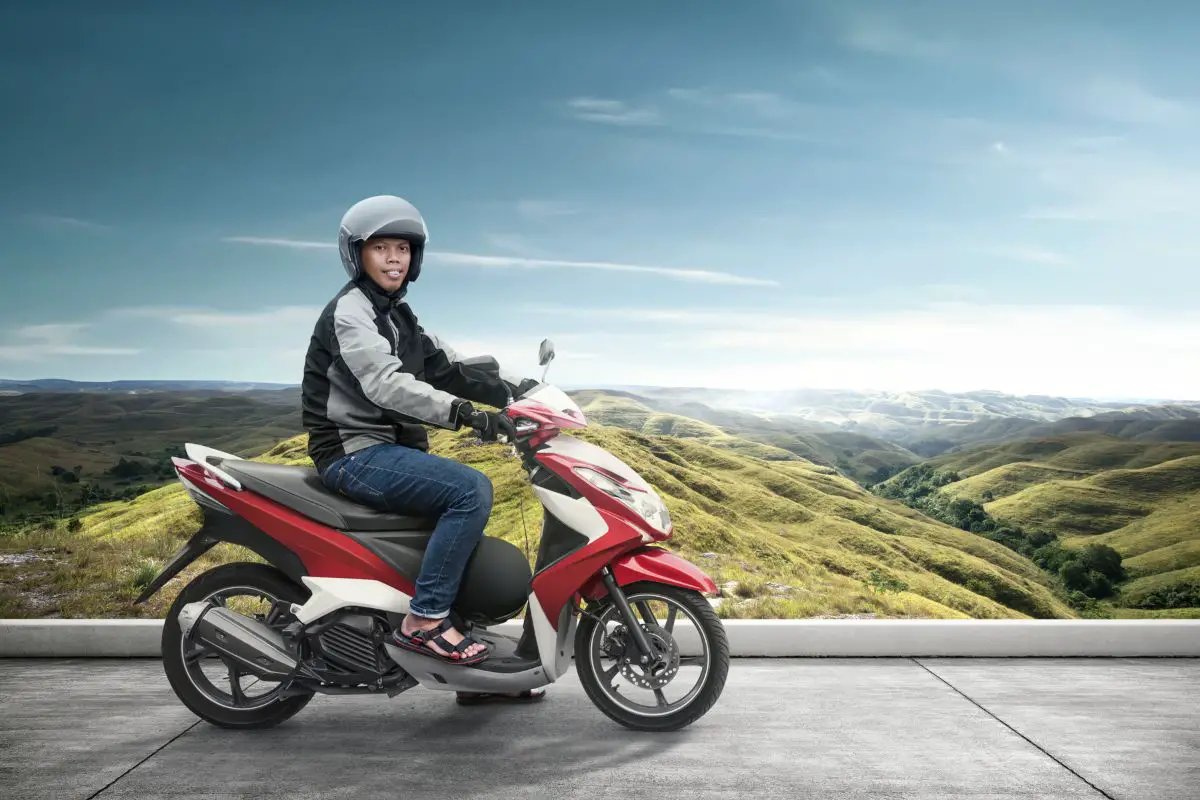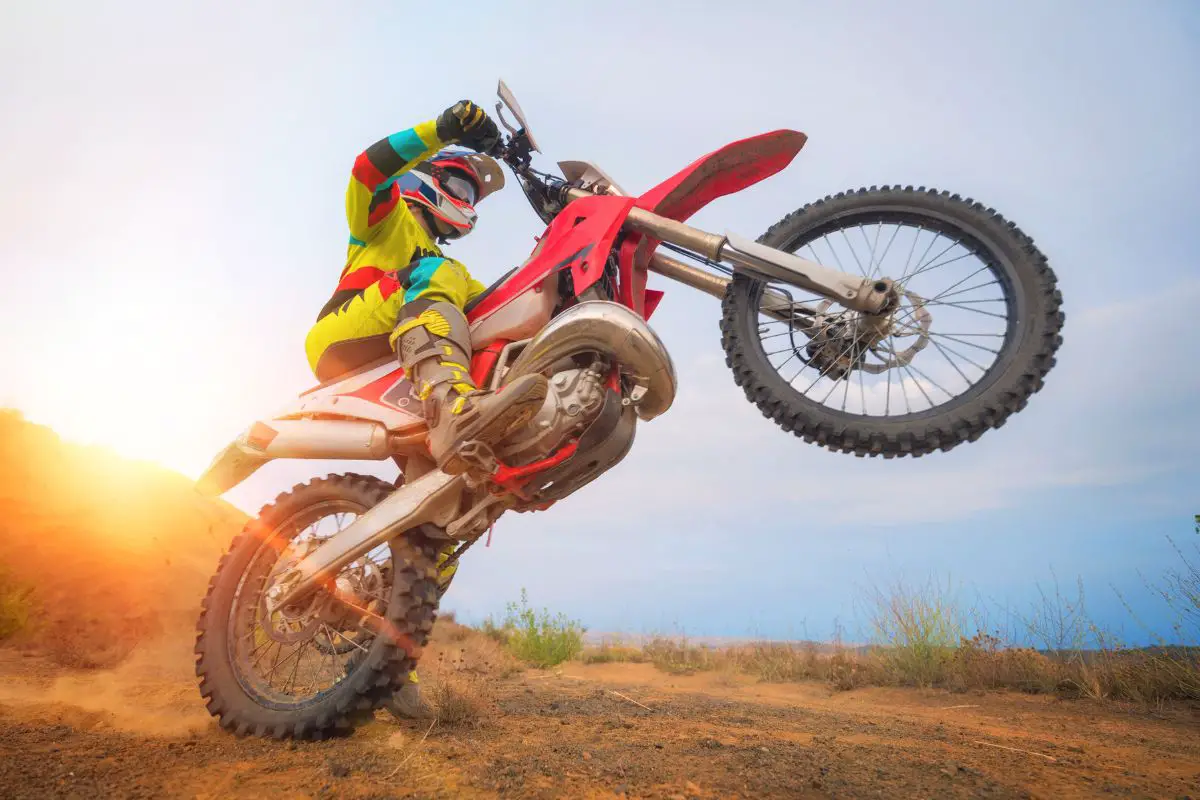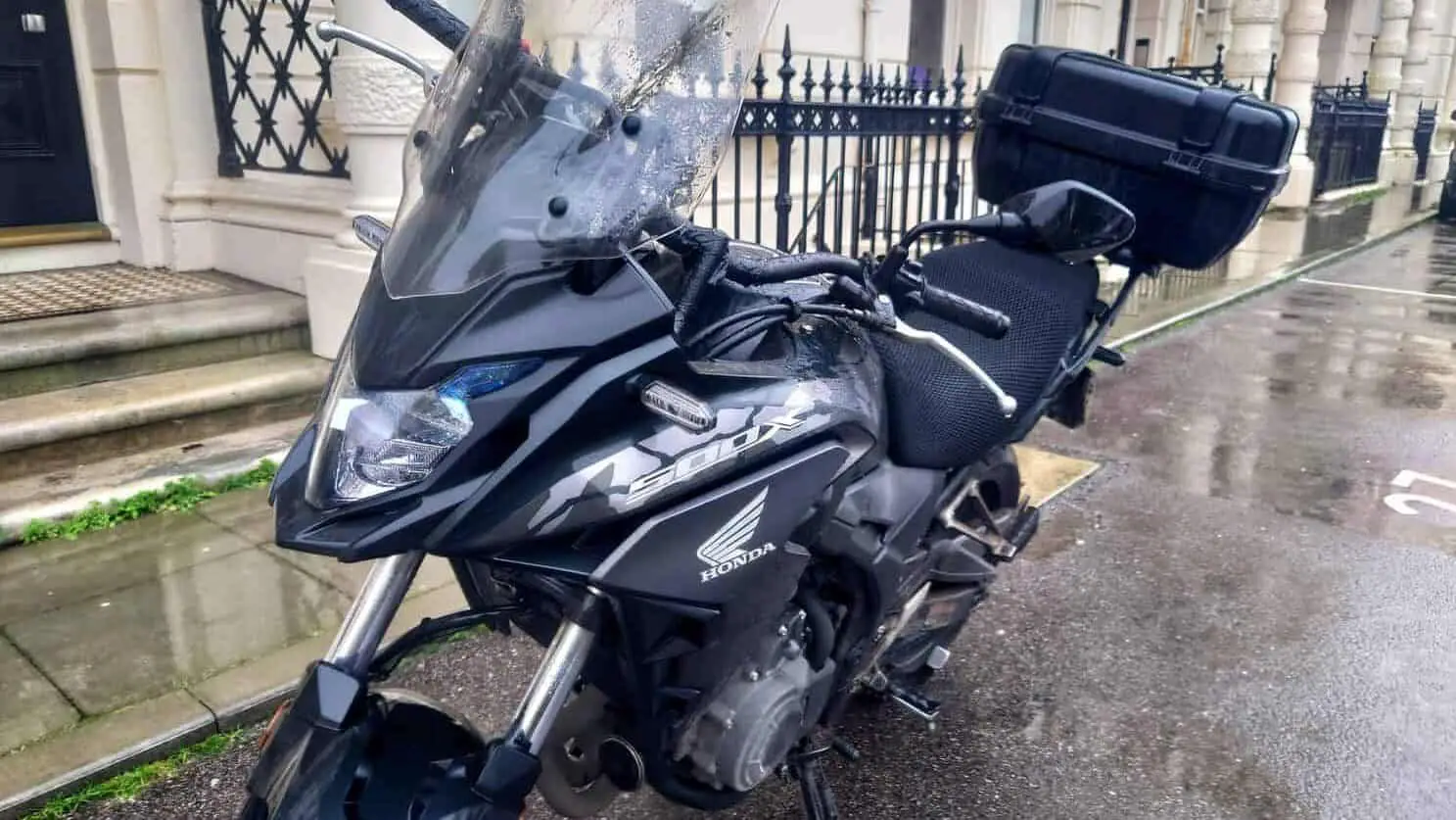
Over my 20 years or so that I have been riding motorcycles I can tell you that I ride in the rain a lot. It’s through my own experience of riding in bad weather that I would like to pass on some tips to my fellow motorcyclists on how you too can ride your motorcycle safely in the rain.
Riding your motorcycle in the rain is not dangerous as long as you ride differently, taking your time, riding defensively, and keeping your wits about you at all times.
Other road users, you know the ones, don’t see us motorcyclists at the best of times, on a sunny dry day. So when it rains we motorcyclists have to be extra aware!
Of course, you can always park under a dry cover and wait until the clouds clear up. Sometimes, I do this. But with our busy lifestyles, this is very rarely an option for me, and I’m sure not an option for many other motorcyclists.
Here are my 17 Top Tips For Riding Your Motorcycle Safley in the rain:
- Make sure you have tires ready for wet roads
- Be extra careful at intersections
- Take a break and wait for the rain to stop
- Be aware of in-road hazards
- Accelerate and brake cautiously
- Make sure your lights are working
- Steering and throttle control
- Look well ahead
- Use car tracks to your advantage
- Stopping distances get longer
- Focus on one task at a time
- Loosen your grip
- Stand up now and then
- Make sure you can see clearly
- Invest in motorcycle wet weather gear
- Avoid maintenance hole covers or shiny, smooth road surfaces
- Pack any luggage in dry bags
I want to thank the sponsors of this post-EMANUALONLINE. Using their service, you can download your motorcycle or car manual to your mobile phone or any other device, so you will have it handy should you ever be out and about and need to use it. You can visit their website by clicking the icon below and using the code BUDDY15 to get a 15% discount.
So, let’s run through my list of 17 top tips in more detail:
#1 Make sure you have tires ready for wet roads
Many motorcycle tire manufacturers have upped their game in recent years with improved features to give our bikes more stability and control. But when you’re planning for a long road trip where you may encounter wet weather, you want to look for a few features within the tire that will benefit you.
A set of tires that wear well for starters, so your treads last well after your first season. You’ll also want a tire that drains water well, so it can keep moving in the middle of a rainstorm. The most important feature you will want good grip, so ask about that feature when shopping for tires.
Checking to make sure your tires are inflated to the correct tire pressure will ensure that they grip the road in any weather condition and serve you well.
There is a wide choice of motorcycle tires on the market, so choose wisely. Many brands offer tires that are extremely effective when the roads are wet or dry.
Remember, you only have two tires on a motorcycle so get the best you can afford.
#2 Be Extra Careful At Intersections
Wet pavement is the norm when riding your motorcycle in the rain, but intersections can be hazardous. Try to avoid the center of a lane and stick to a dry line. Water can gather in different areas of the road so try to stay to the right or the left where the water is less prominent.
You have more control on dry pavement, but the sides of the lines are often cleaner than the center. Places where cars stop frequently, have a high concentration of residue, so be extra cautious if you can’t avoid this area.
Leaks, drips, and rain make these areas extremely slick when it’s wet. Additionally, it’s difficult to always see these oil or diesel residue spots while riding.
Railroad crossings at intersections are of special importance. As you cross tracks, make sure to keep your bike upright so your tires won’t slide on the slippery steel tracks.
The best way to avoid an accident at intersections is to slow your speed considerably and don’t accelerate or brake suddenly. Also, don’t try to run yellow lights. If you need to make an abrupt turn or brake quickly, it’s likely you will have a traction problem which might result in an accident.
Finally, take special care to leave distance at a red light, avoid putting your boots down on extra slippery areas, and watch your mirror for cars that might slide into you from behind.
#3 Take a break and wait for the rain to stop
Roads are typically coated in grime, including oil and brake fluid, on any given day, making it tricky enough for you to stay upright. When the rain mixes with these substances, it makes for a recipe for disaster if you hit a slick patch and begin to wobble.
When you head out for a ride, depending on how far you are going, it may be a good idea to pack some food and items that can entertain you while you wait out a storm if you get caught in one. If you’re lucky, you’ll get to a diner or a store where you can sit it out and maybe grab a coffee and a bit to eat.
If you are new to riding a motorcycle taking a break from riding if the weather turns bad is definitely the best idea.
Once the rain has passed, you can safely get back on your route.
#4 Be aware of in-road hazards when it is raining
When riding your motorcycle in the rain, it’s a good idea to steer around puddles as they can be deceiving. While they may look shallow, they can cover surprises, such as a pothole, that can throw you off guard and off your bike.
Try to stay away from any painted directional signs as these can be slippery when the roads are wet.
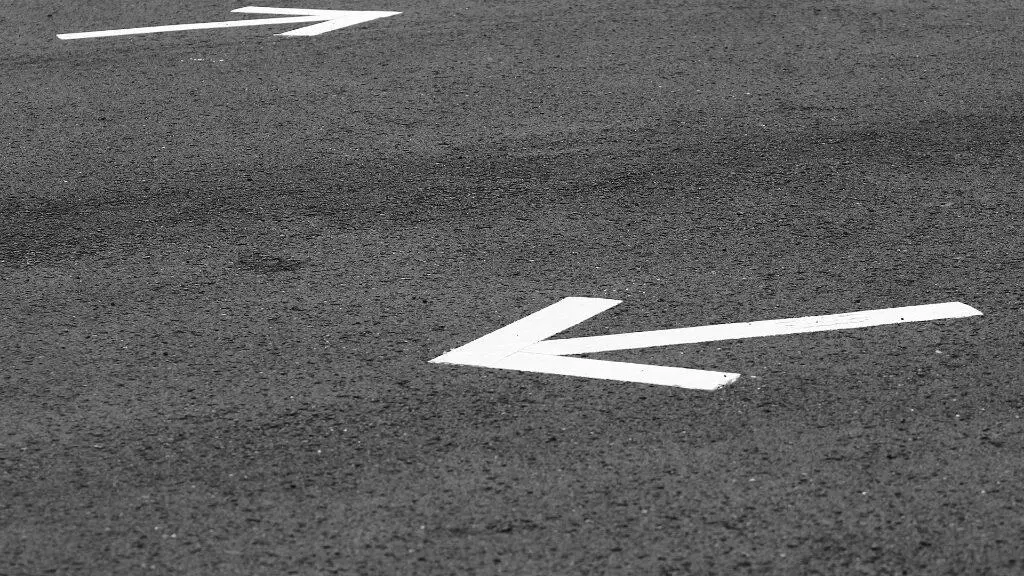
Water sitting on the road can also put a drag on your bike and affect your balance, so it’s best to avoid them altogether if at all possible.
#5 Accelerate and brake cautiously
Traction is reduced when you ride in the rain, so you need to be extra cautious not to make sudden changes when accelerating, braking, and steering. It would help if you changed how you handle your bike whilst riding in the rain by making smooth throttle adjustments a little at a time, using less of a lean angle, and gradually braking.
Better tires and anti-lock brake systems (ABS) have increased the safety of riding a motorcycle in the rain over the last decades. Yet, putting on the brakes too quickly in the rain will result in them locking up or ABS taking over; both of these situations are less than ideal. You might find yourself hydroplaning across a puddle, a wet area, or a slippery surface.
It’s always best to leave a safe distance between you and the car in front of you, but this is especially true in the rain when traction is reduced, and braking suddenly might be dangerous. When you reduce your speed while riding in the rain, it allows for increased braking distance. If a vehicle makes a sudden move or you come upon a hazard on the road, you will have more time to brake.
It’s in your best interest to allow more time to make turns too. Trying to make last-minute turns on wet, slippery roads during the rain might not only lead to an accident but could be fatal. If you miss a turn, go around the block, turn around, or take another route.
#6 Make sure your lights are working
When riding your motorcycle in the rain will not be seen so clearly. Make sure that your lights are working and clean the headlamps on your bike to make your lights as bright as possible. Check and clean your brake lights too.
It is critical that other road users are able to see motorcycles at all times especially when it is raining.
#7 Steering and Throttle Control
Applying the throttle transfers the motorcycle’s weight from the front tire towards the back, evening out the bike’s weight distribution. This increases the motorcycle’s stability. Now that you have taken some of the motorcycle’s weight off the front tire, there is less likelihood of losing grip.
Proceed cautiously when you start and stop. Using the throttle and engine to slow the bike down allows you to keep well in control of your motorcycle when the roads are wet.
#8 Look well ahead
Keep looking well ahead of you so you can plan for any obstacles or changes in your path. If you have to stop, its best to do so with lots of lead time, decelerating by using your gears when you can will help you keep control of your bike.
#9 Use car tracks to your advantage
Where it’s possible, line up your tire tracks with the ones of the vehicles ahead of you. While having other vehicles on the road at the same time can create an aggravating spray, they can work with you for a safer ride. Stay back far enough that your face doesn’t get filled with water arising from traffic ahead of you.
I have found this helps me out when I have found myself riding in heavy rain.
Fortunately, the wheels of the car ahead push the water off the road for a few seconds. There is a delicate balance between being close enough to make the most of this advantage and being far enough back to stop in time when you must.
#10 Stopping distances get longer
Typically, the right distance between you and a car ahead can be covered in five seconds. Whilst riding your motorcycle in the rain, you’ll want to extend that to eight or 10 seconds to be sure, as stopping distances can double when the roads are wet.
I always increase my distance from the vehicle in front when the roads are wet.
Motorcycle Stopping Distance Chart
Speed | Stopping Distance Dry Road FEET | Stopping Distance Dry Road METERS | Stopping Distance Wet Road FEET | Stopping Distance Dry Road METERS |
| 10 mph | 4 | 1.21 | 8 | 2.41 |
| 20 mph | 15 | 4.57 | 30 | 9.14 |
| 30 mph | 33 | 10.06 | 66 | 20.12 |
| 40 mph | 59 | 17.98 | 118 | 35.96 |
| 50 mph | 93 | 28.35 | 186 | 56.70 |
| 60 mph | 134 | 40.84 | 268 | 81.68 |
| 70 mph | 182 | 55.47 | 364 | 110.94 |
| 80 mph | 238 | 72.54 | 476 | 145.08 |
| 90 mph | 300 | 91.44 | 600 | 182.88 |
#11 When it rains, focus on one task at a time
Under normal conditions, you would often combine actions, such as shifting gears or braking, while making a turn. However, when weather conditions change, and the roads become wet, you will want to simplify this process.
Focusing on your actions whilst riding your motorcycle in the rain increases your chances that the motorcycle’s tires will stick to the road. Since that is your key priority at the moment, you should be hyper-aware of anything that would affect your tire’s grip.
Making sure that you are aware of any other vehicles next to you ,behind you or in front of you, checking your mirrors and your speed will help you stay safe.
#12 Loosen Your Grip
While this can apply to every muscle in your body as you battle the elements, it really applies to your hands in this case. A grip that is too tight can lead to three very bad things.
First, it can make you overcorrect and this is not the time to try to recover from that type of error.
Secondly, while you may feel that tightening your grip will give you more control, it will actually undermine your bike’s design. Your suspension is made to cope with small, erratic movements. Trust it to do its job while you take care of the bigger picture.
And finally, the more you grip, the more your hands will tire. The last thing you need is numb hands that don’t respond quickly if you must react to an oncoming puddle or car that slams on its brakes in front of you. Just as your suspension needs to be ready to perform at the moment, so do you.
This is also where you will get the benefit of wearing a good quality pair of gloves. If possible, make sure when you purchase your motorcycle gloves they are waterproof as mine are. I have really benefited from my hands staying dry in bad weather.
#13 Stand up now and then
If the rain is pounding down, your lap will become a reservoir within a short time. Even if you are wearing rain gear, water may pool in your groin region and seep into your clothing through the zipper’s teeth.
The best way to clear up this problem is to stand up on the pegs every few minutes and let it run right off. It will also allow you to stretch your legs a little also.
If you can find rain pants with a long side zipper rather than a front zipper, then you can skip this step. There are lots of great rain protection pants out there.
Be careful though when you stand up on the pegs as I have found them to be slippery in the wet. So if you haven’t upgraded your motorcycle pegs just be aware of this.
#14 Make sure you can see clearly
Helmet face shields can fog up, which you can avoid by wearing goggles to keep the raindrops out of your eyes. Some helmets come with a pin-lock system, which stops the visor from fogging up, so if you have one of these helmets, you will not need to look for an alternative method.
When riding your motorcycle in the rain, the raindrops can feel like bullets hitting your face, so it’s best to wear a full-face motorcycle helmet that will protect you from this.
I recently purchased a motorcycle helmet with the pin-lock system and recommend this system to any motorcyclist. It really does keep my visor from fogging up.
The last thing you want is to have your vision obscured as you navigate all the other hazards you’re facing when it rains.
If you need to purchase a new helmet, why not check out my other article on how a motorcycle helmet should fit and how to purchase one by clicking on the link here.
#15 Invest In good quality wet weather gear
It seems so obvious. When shopping for rain gear, you need to keep a few things in mind. You will want reflective or bright surfaces so motorists can see you, no matter what is coming out of the sky. Visibility will keep you alive so make sure you have it in spades.
If you are going to be riding long distances in the rain, ensure your gear will keep you warm. It’s far worse to be cold and wet than just wet. Purchase merino wool socks, if you can afford them, for optimal comfort. If you can keep your feet, hands, and head dry and warm, you can probably ride comfortably enough until you arrive at a safe place where you can stop and take shelter.
I wear a pair of waterproof socks if there is going to be a chance of rain and this really helps to keep my feet dry and warm.
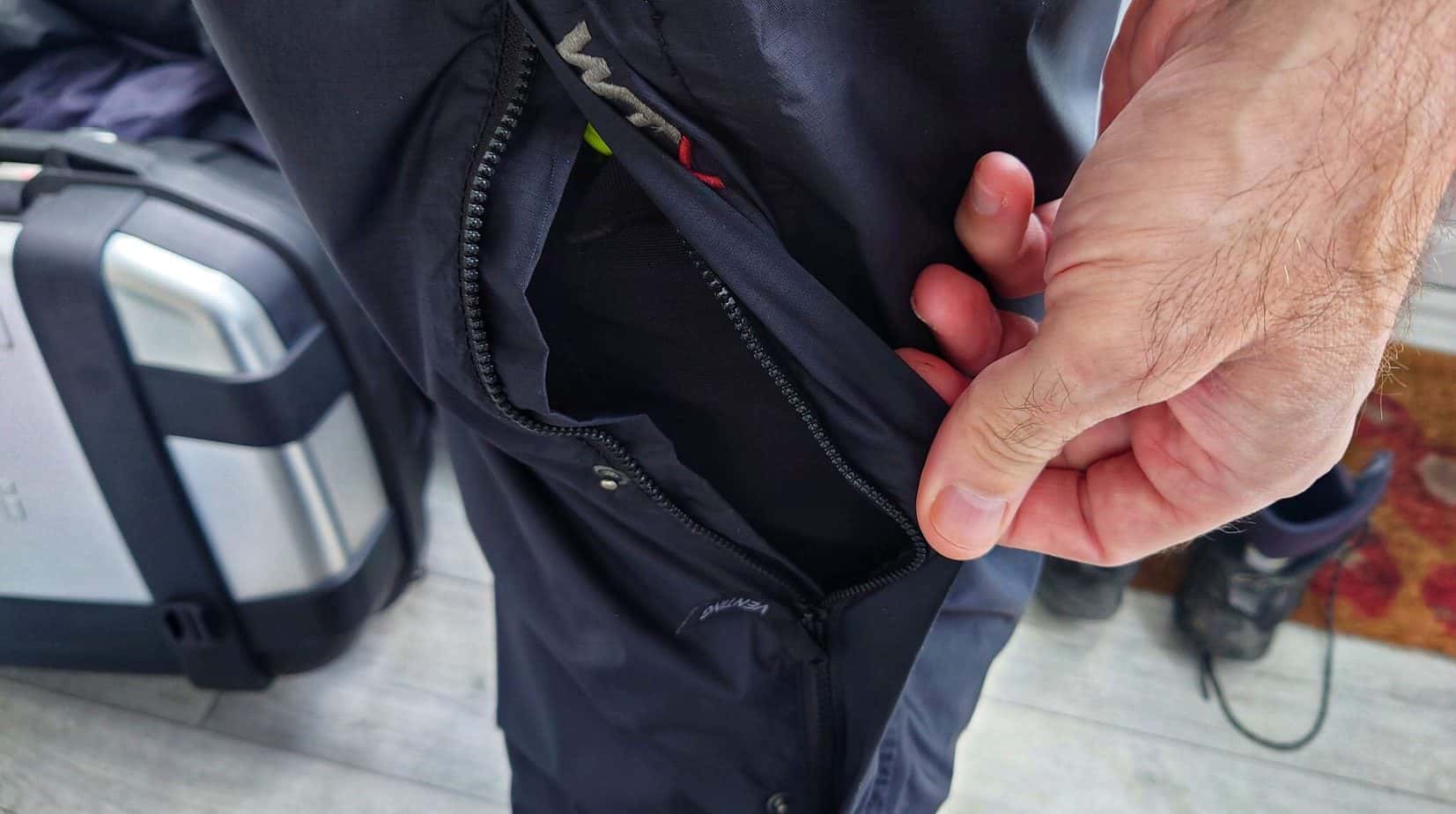
If cost is of no concern to you, then add heated gear to your wardrobe. I wear a pair of Gerbine heated gloves which really makes a difference to my comfort whilst out in the rain or cold.
If you’re going old school, focus on your base layers, but choose compression layers. They dry quickly, in addition to their roles of supporting your muscles and preventing chafing.
Take a break indoors if you can when the rain is relentless.
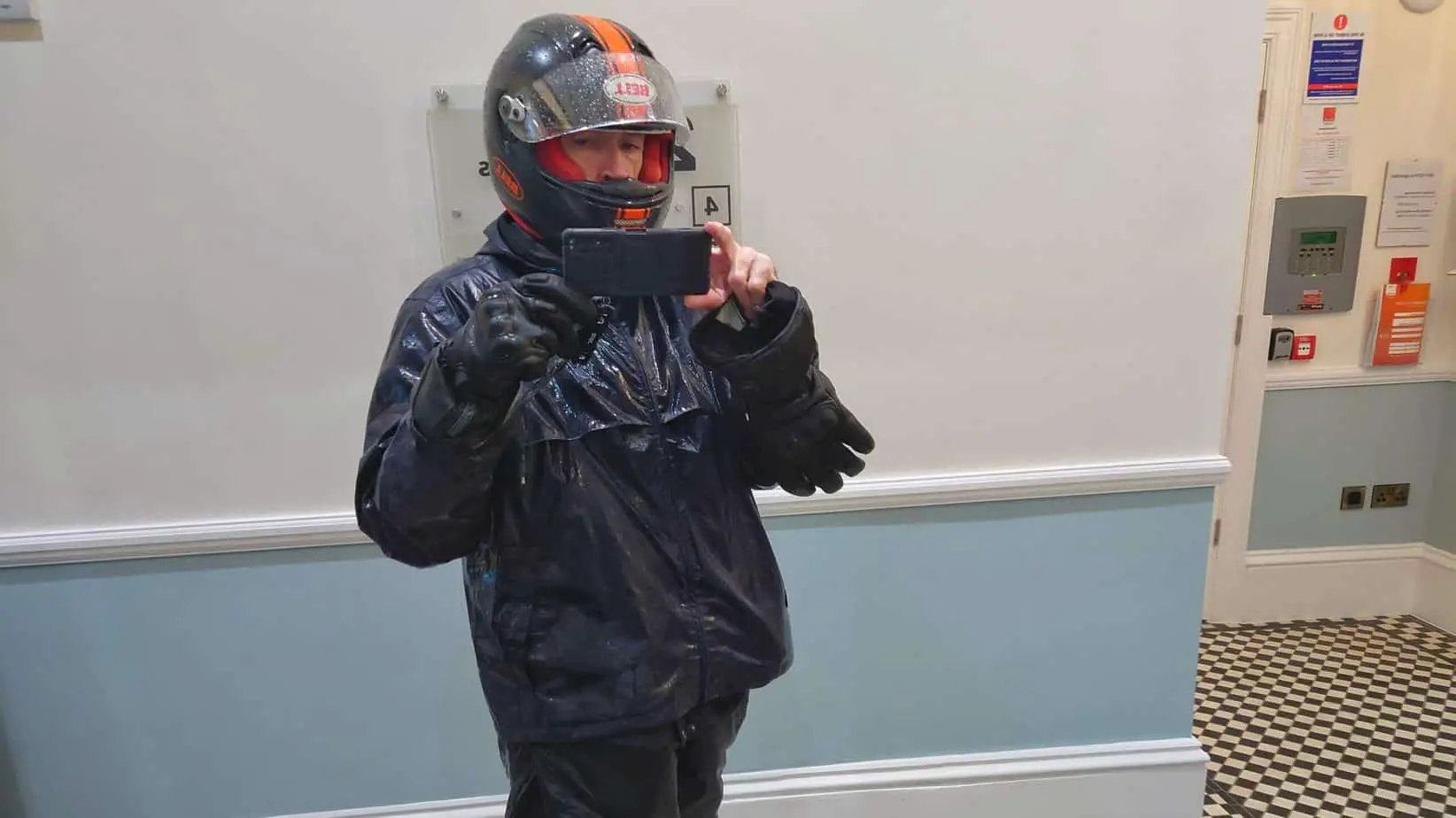
#16 Avoid maintenance hole covers or any shiny, smooth road surface
On top of the usual risks on the road, metal surfaces like railway tracks and maintenance hole covers get even more slippery when riding your motorcycle in the rain. It’s best to veer around these surfaces if at all possible, so you don’t slide and crash. If the road has painted markings on the road, trying to avoid them as the paint can become slippery in the rain.
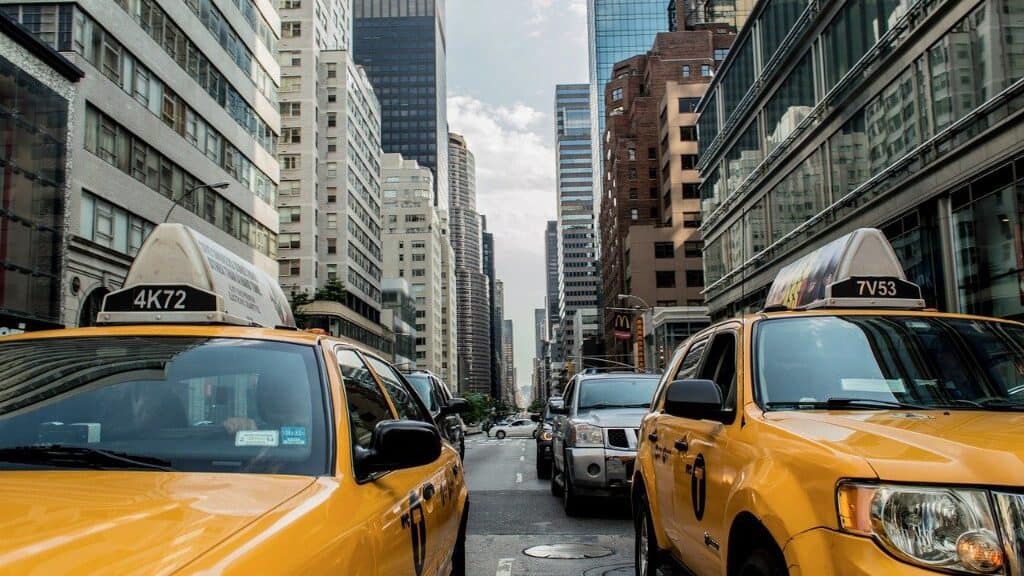
Especially when riding your motorcycle around corners, be careful of these types of surfaces. Sometimes you can’t avoid them, so be prepared for your back tire to slip slightly. You should easily be able to control the slight skid if you are not going too fast.
I’m always prepared for the back wheel on my motorcycle to slip even at lower speeds. I have found it not to be a problem. As long as you are aware of the situation, it is easy to control.
#17 Pack any luggage in dry bags
If I’m traveling on my motorcycle with luggage, I always pack any luggage I have in dry bags whether there will be a chance of rain or not. You never know if a storm or even light rain will hit you out of the blue, so packing your personal property using drybags will always keep it protected.
Also I have found that dry bags seem to be better made and higher quality than other normal bags so feel they are better value for money as they last longer than regular bags.
Verdict
There are really two keys points within this article:
Firstly, make safety your priority, so you get home or to your destination safely. It may take a little longer and require more diligence, given the road conditions, but it’s worth it.
Secondly, invest in the gear to get through the storm or any bad weather which may come your way, whether it’s good tires, googles, or rain gear. It’s an investment that will pay off.
Happy Riding!
SOURCE
